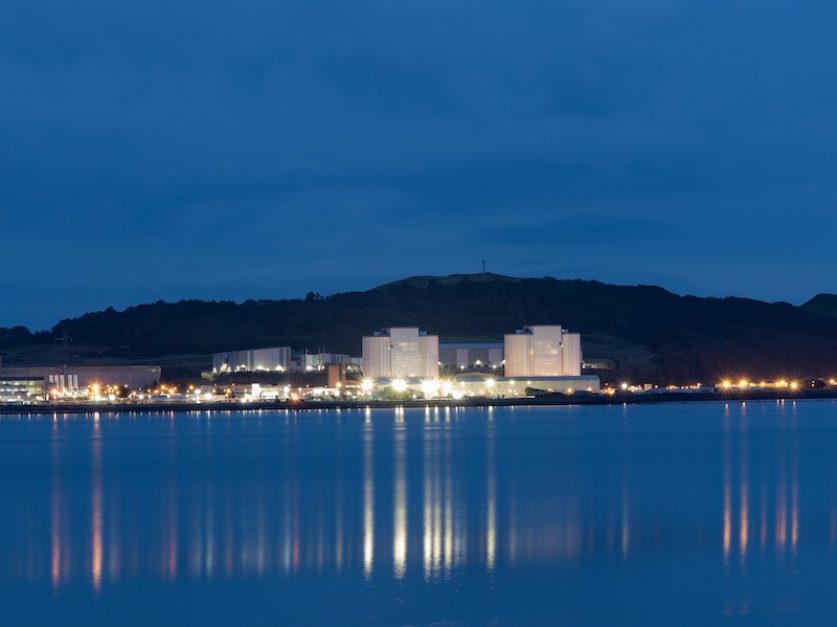
The Hunterston B nuclear plant was shut down for the final time on Friday 7 January, reducing the UK’s nuclear capacity by one-eighth and fuelling calls for more government funding for replacements.
The North Ayrshire power station came online in 1976 and was capable of powering 1.7 million homes. It was initially supposed to shut in 2001 but saw its lifespan extended by more than two decades.
So the closure of reactor 4 on Friday—reactor 3 shut for the final time in November—marked the end of an era for plant staff and the wider community.
Station director Paul Forrest said: “It was originally thought Hunterston B would run for 25 years but investment in the plant and the people who work here mean we’ve been able to safely extend that to 46 years.
“This is an incredible achievement and everyone here is proud of what the station has accomplished.”
Owner and operator EDF won regulatory approval to run the plant until March 2023 but announced in August 2020 that it would decommission the plant early due to cracking in the reactors’ graphite cores.
The Office for Nuclear Regulation (ONR) was concerned that in the event of a rare seismic event too many cracks would damage the structural integrity of the core and mean it couldn’t be shut down in an emergency. Tests run by EDF found that even with the cracks, the cores could withstand a once-in-10,000 years earthquake. However. the French utility said it would nonetheless accelerate the decommissioning to “provide clarity for our staff” and in light of the plant’s age.
Hunterston B employed 480 staff. That workforce will be cut by a quarter while the plant undergoes a defueling process, with the spent nuclear fuel sent to Sellafield. EDF said those 125 employees would either retire or be redeployed to other sites.
At the end of the three-year defueling process, the Hunterston B site will be handed over to the Nuclear Decommissioning Authority to manage into the future.
Cracks or the risk of cracking at several other EDF-owned nuclear power stations of a similar design are also expected to force early closures. Hinkley Point B will stop generating electricity and move into decommissioning no earlier than 15 July 2022. Two other AGR plants—Heysham 1 and Hartlepool—are expected to shut by March 2024.
That means that the UK will have just 3.6GW of nuclear capacity available by 2025—down from a peak of 13GW between 1995 and 1999 and capable of generating just 6% of the peak demand forecast for this winter. While more renewable capacity will be online by that date, electricity demand is also expected to be higher, as fossil fuel vehicles are replaced by EVs and boilers by electric heat pumps.
Additionally, EDF recently announced that two other AGR stations, Torness and Heysham 2, will shut two years early, in March 2028, as they too are likely to develop cracks.
That means that just one existing nuclear power station will generate electricity in the UK past March 2028: the younger Sizewell B. Construction has begun on just one replacement: the £23 billion Hinkley Point C, the first reactor of which is scheduled to connect to the grid in June 2026.
The loss of this much low-carbon generating capacity could imperil the UK’s decarbonisation goals and make the electricity system more reliant on natural gas and the volatile hydrocarbon markets that are currently pushing energy prices to record highs.
Tom Greatrex, the chief executive of the Nuclear Industry Association (NIA), trade body for the sector, said: “As the current energy crisis demonstrates, without nuclear the cost of the electricity we rely on is higher, causes pollution and leaves us reliant on burning imported fossil fuels. That’s why we need new nuclear – to get to net zero and provide the reliable, secure and clean power to live our lives.”
With the proper support, nuclear capacity could grow to 14.25GW by 2035, the NIA said. But that hinges on the government adopting a new financial framework for funding nuclear projects like Sizewell C. The regulated asset base (RAB) model would guarantee developers higher returns and shift risk to taxpayers.
The prediction also relies on the successful rollout of Rolls-Royces’ small modular reactors (SMRs), which have drawn £210 million from the government’s coffers and £280 million from private investors.




